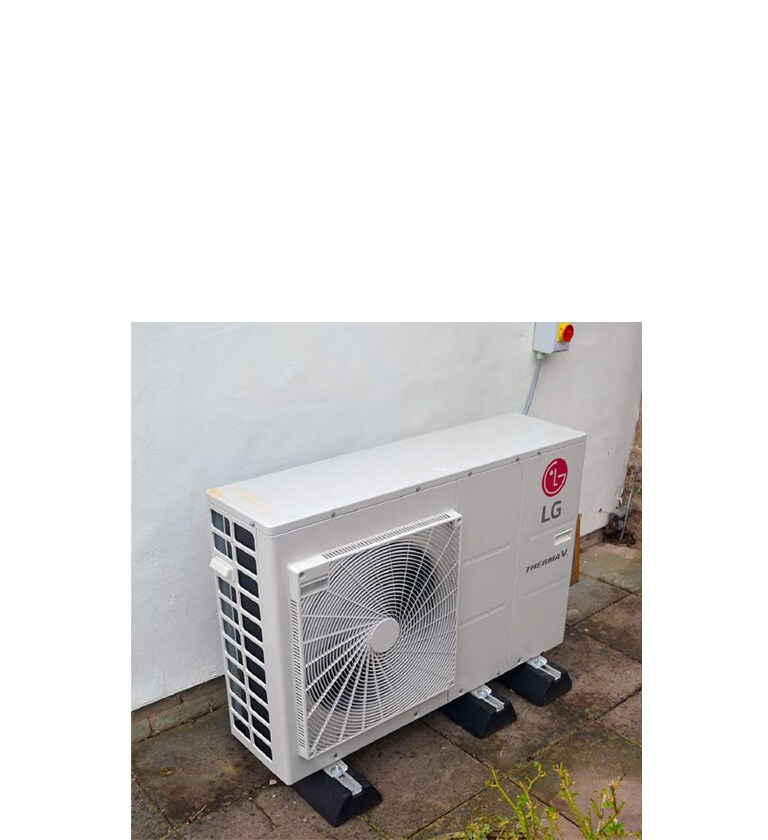We use cookies, including cookies from third parties, to enhance your user experience and the effectiveness of our marketing activities. These cookies are performance, analytics and advertising cookies, please see our Privacy and Cookie policy for further information. If you agree to all of our cookies select “Accept all” or select “Cookie Settings” to see which cookies we use and choose which ones you would like to accept.
There is a cottage in deepest, rural Herefordshire that is warming quite literally to LG’s Therma V monobloc air to water heat pump.
With parts of the cottage dating back to 1747 and some of the walls over two feet thick, it is a wonderful example of longevity in the history of cottages in the English countryside and when Tony and his wife Charlotte bought it six years ago, they inherited an elderly oil-fired Rayburn and an oil burner in the lounge that supplied the heating and hot water throughout the property.
The couple are very environmentally aware in every aspect of their lives and are enthusiastic organic gardeners as well as being drawn towards renewable heating. And they do their homework when it comes to researching what suits them best. So, when it came to replacing the sometimes-smelly oil fired Rayburn, they began looking closely online at the available options for a replacement heating system. They had been aware of heat pumps as an option for a while but began to look more closely and were impressed by what they found out. They were keen to use a local supplier who would be on hand if they needed help or servicing of the system they selected, so they contacted Caplor Energy based in Fownhope.
After meeting up and getting a quote, they pressed the button on the new installation which started early in the New Year.
LG Electronics latest Therma V air-to-water monobloc heat pump operates on the low GWP R32 refrigerant and is available in 5kW to 16kW 1Ø and 12kW to 16kW 3Ø, in a wide operating range of between 10-135Hz and water temperatures up to 65°C without an electric heater. It comes with an energy label rating of A+++.
These units have a 5 to 6dB lower sound power level than previous models and incorporate several additional new features including a new type of scroll compressor, designed and manufactured by LG Electronics with ‘wet vapour’ injection. The unit has excellent performance at low ambient temperatures – 100% at -7°C.
LG units offer quicker response times for the provision of heating and cooling, by sensing not only the temperature but also pressure – a pressure control sensor provides a faster and more accurate response, reducing the time delay for implementing heating or cooling commands significantly. The addition of pressure control enables the Therma V Monobloc to take less time to reach the desired temperatures, with up to 30% quicker response in cooling and 44% quicker response in heating, with a high level of accuracy and stability built in.
So why did Tony and Charlotte plump for the LG Therma V Monobloc to drive their heating system?
“We did our research and decided that this was what we wanted for our home,” says Tony. “We want to do our bit when it comes to the environment, and we were impressed by the performance data for the Therma V. We love the fact that we don’t have to have tankers forcing their way up our drive on a regular basis to fill the oil tank and we like to know that the impact of this system on the environment is negligible. We also like to support UK companies and were delighted that the hot water cylinder that came as part of the system is made in Manchester and the Stelrad radiators we have throughout the cottage are made in South Yorkshire. We have Compact radiators in the living rooms and bedrooms, and we have an attractive Concord radiator in the kitchen where the wall space was at a premium and we were able to go for a vertical radiator that fitted the end wall of the cupboard we built to house the cylinder perfectly.”
Anything else?
“We were impressed that we could sign up for the Renewable Heating Incentive payments as well of course. We get four quarterly payments every year for seven years – around £1300 a year – so over the seven years we shall almost pay for the complete installation, and with the significant savings on fuel payments we’re anticipating, compared to the fluctuating oil costs we have had for the past six years, we should literally be ‘quids in’ over that period of time!”
